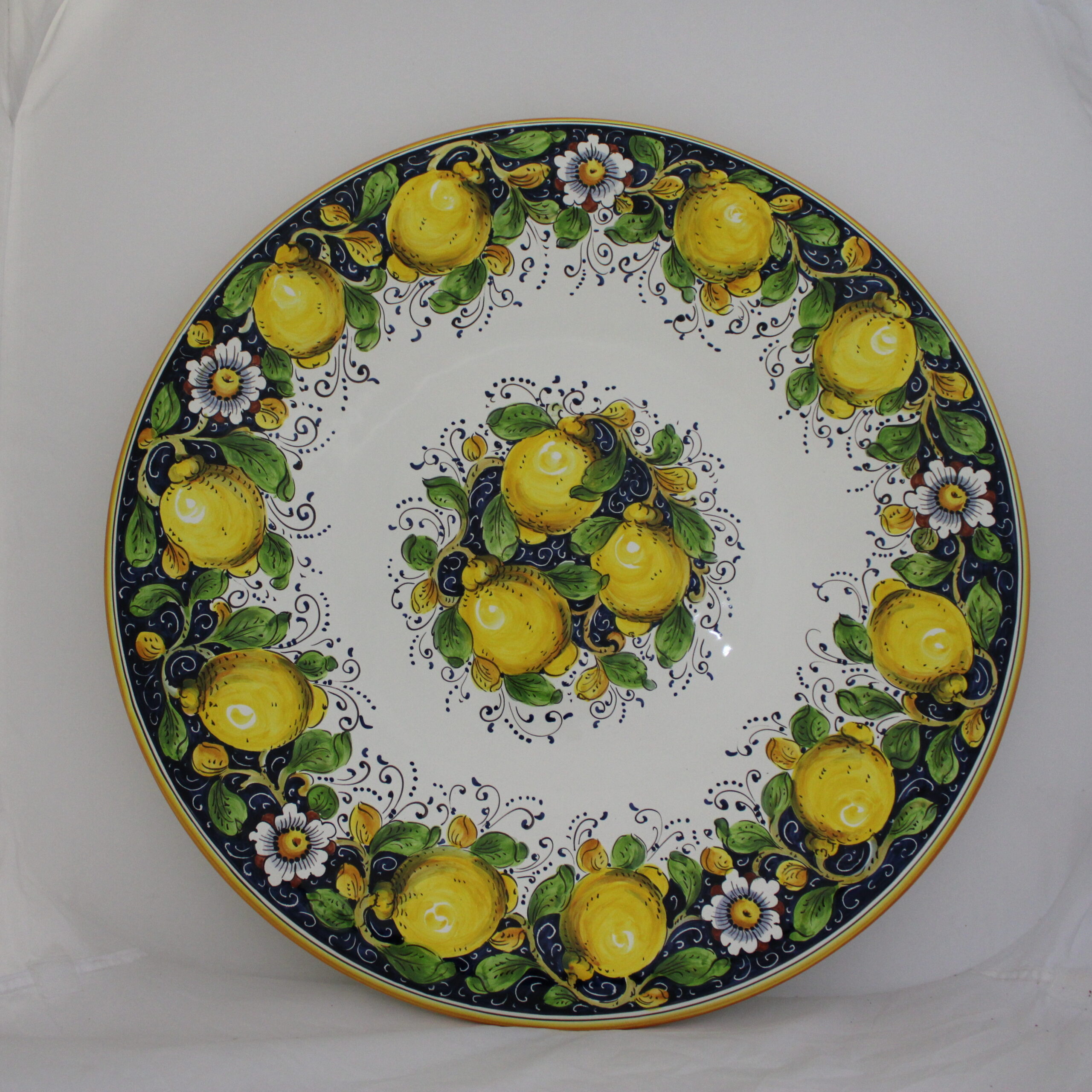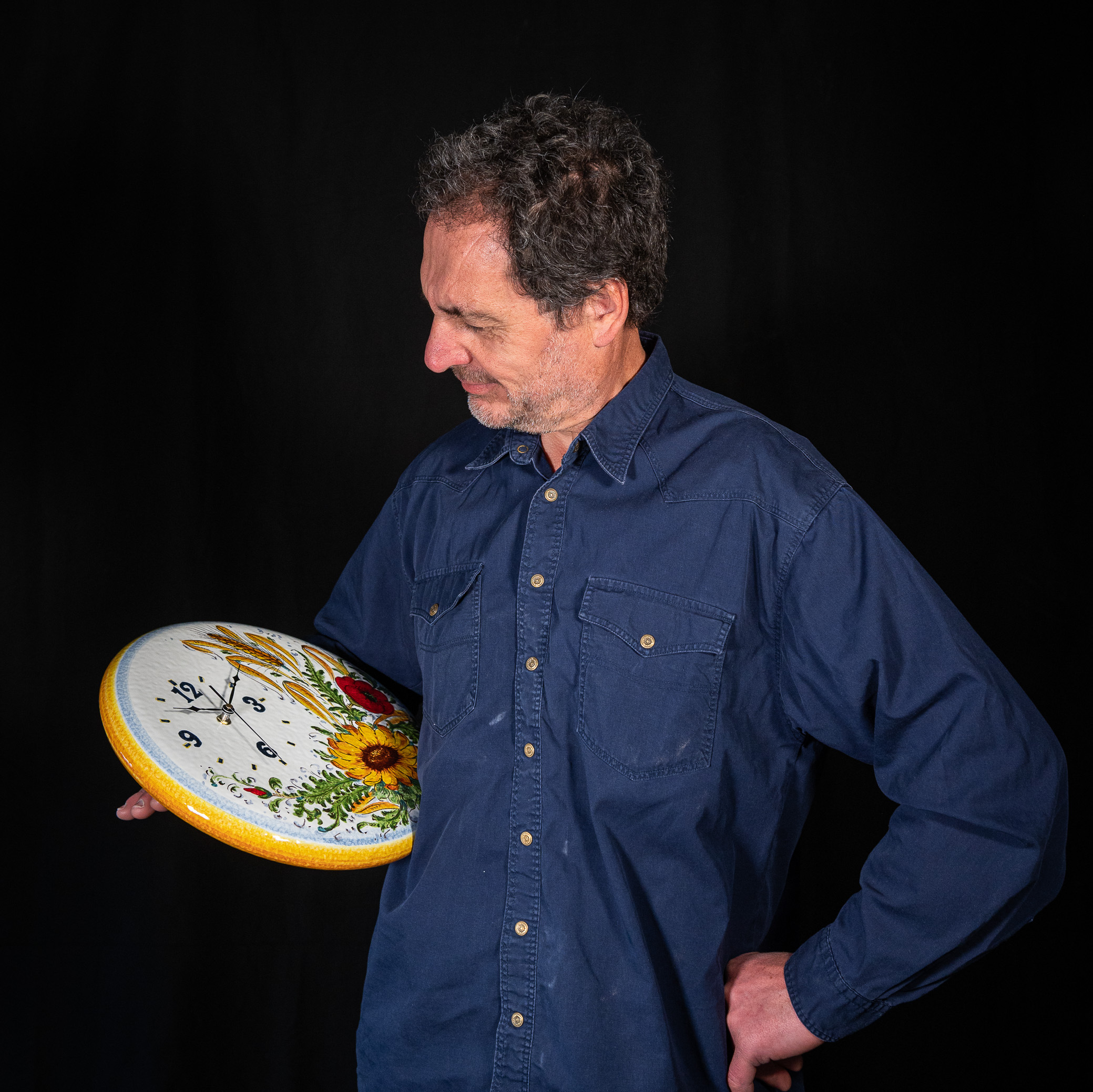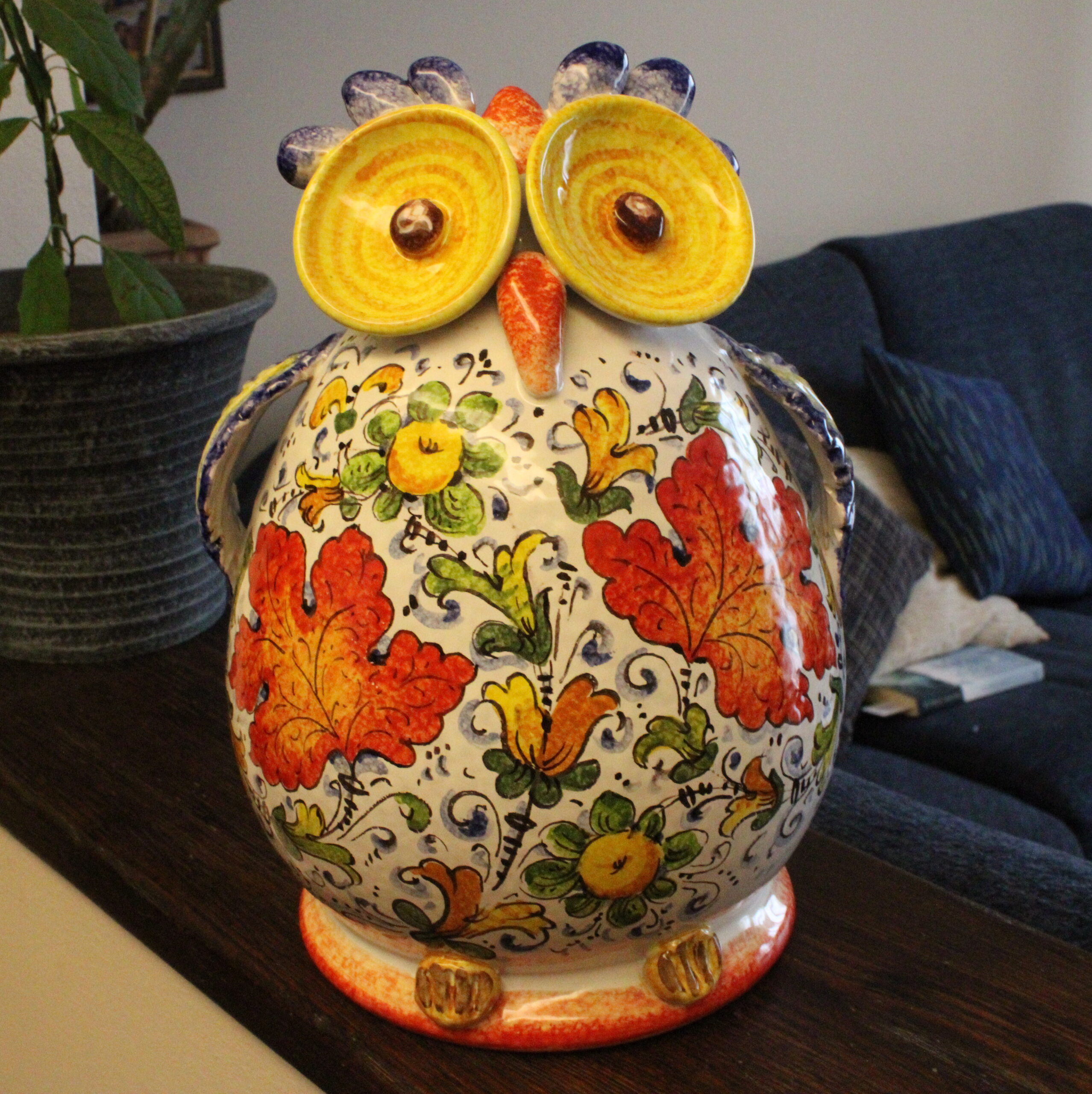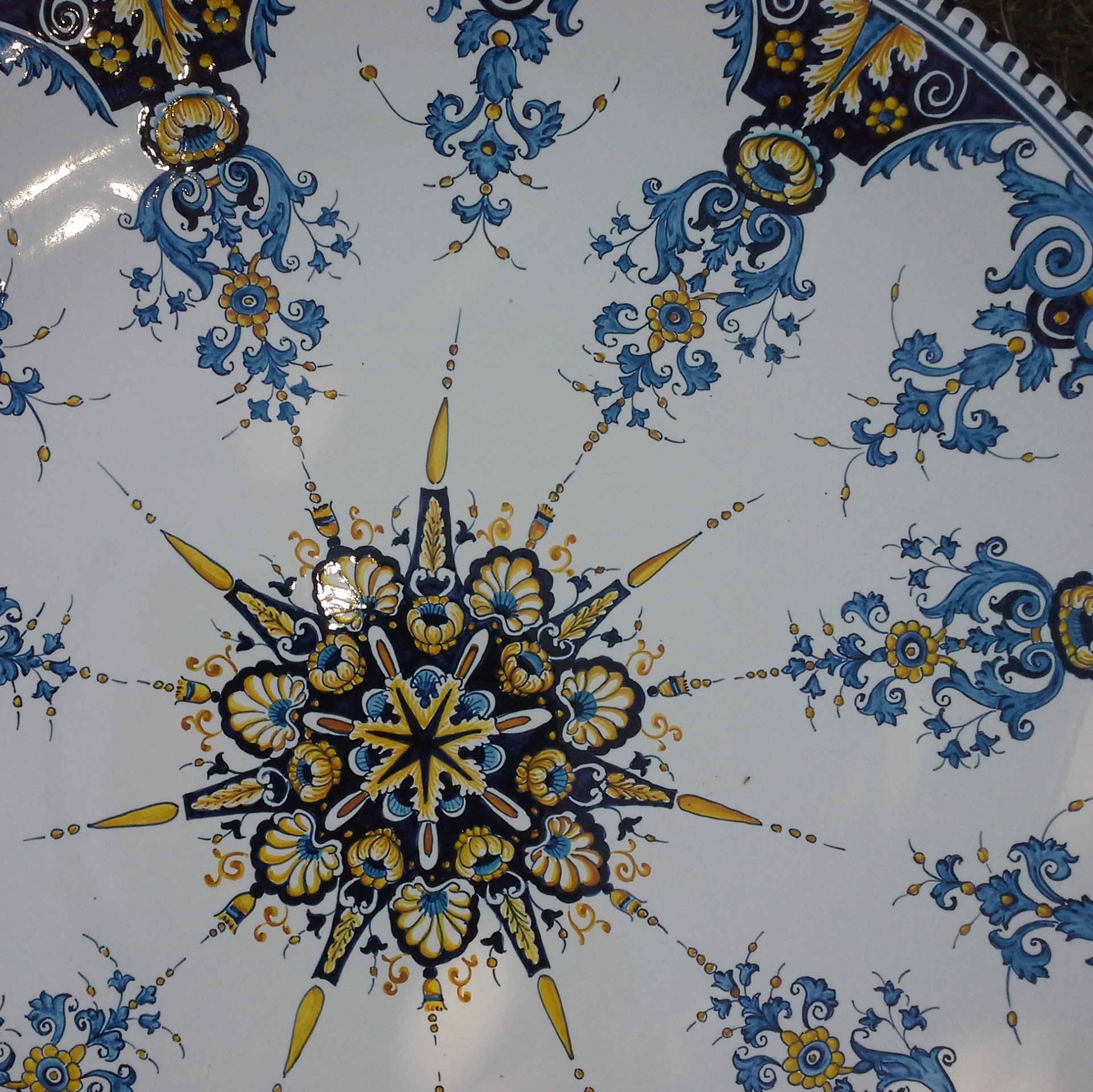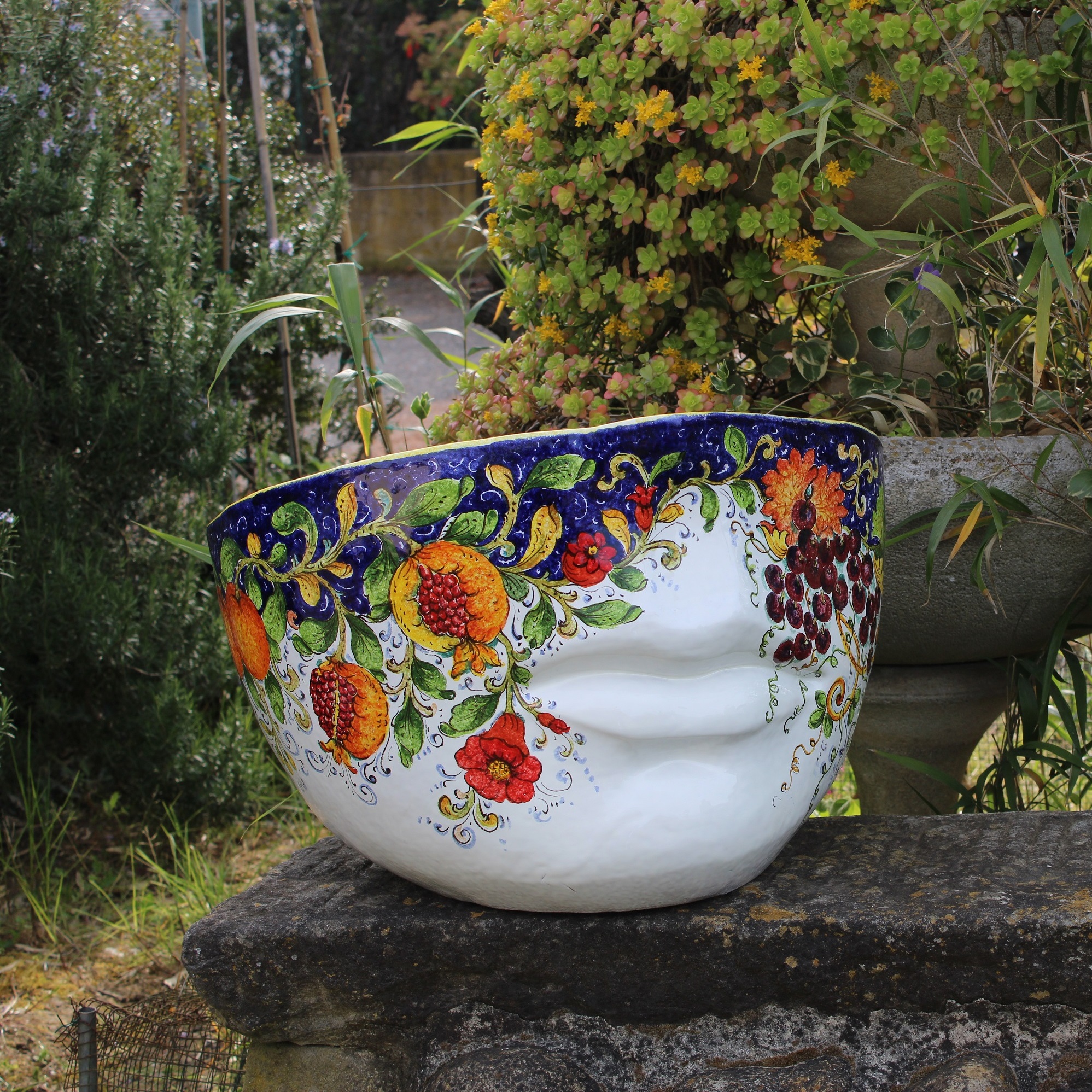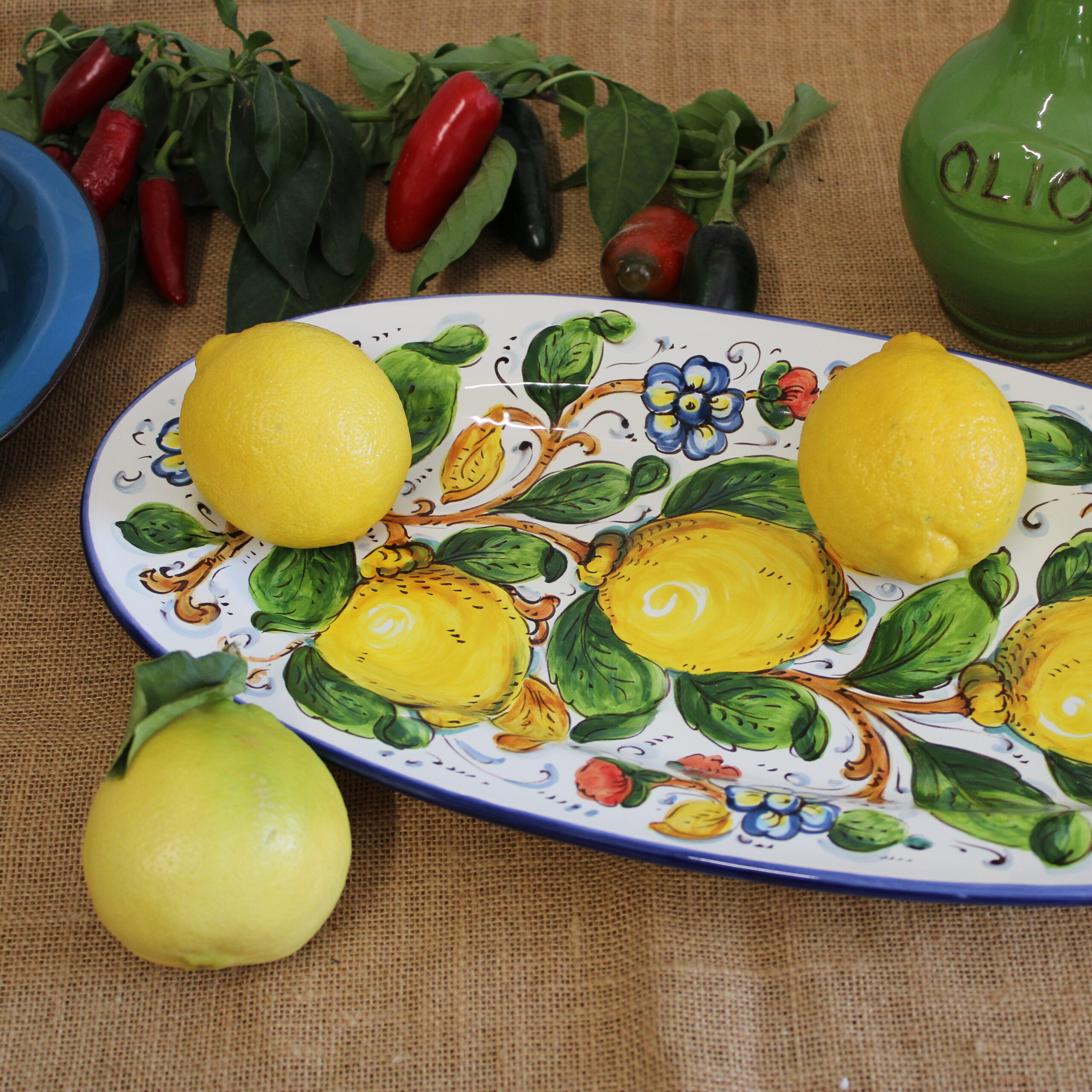FROM AN HUMBLE LUMP OF CLAY TO THE END PRODUCT
Here is a step-by-step brief on how Ceramiche Borgioli moves on from a simple, humble lump of clay to a magnificent, unique end product.
THE MAKING PROCESS
To obtain the finished product, we need to go through long manual labor. Every single butter dish, utensil holder, oil cruet, bowl and so on follow the same handicraft path. It can be summarized in six steps, which are the same for thousands of years. In spite of that, every masterpiece is one of a kind, each one with its personality and style.
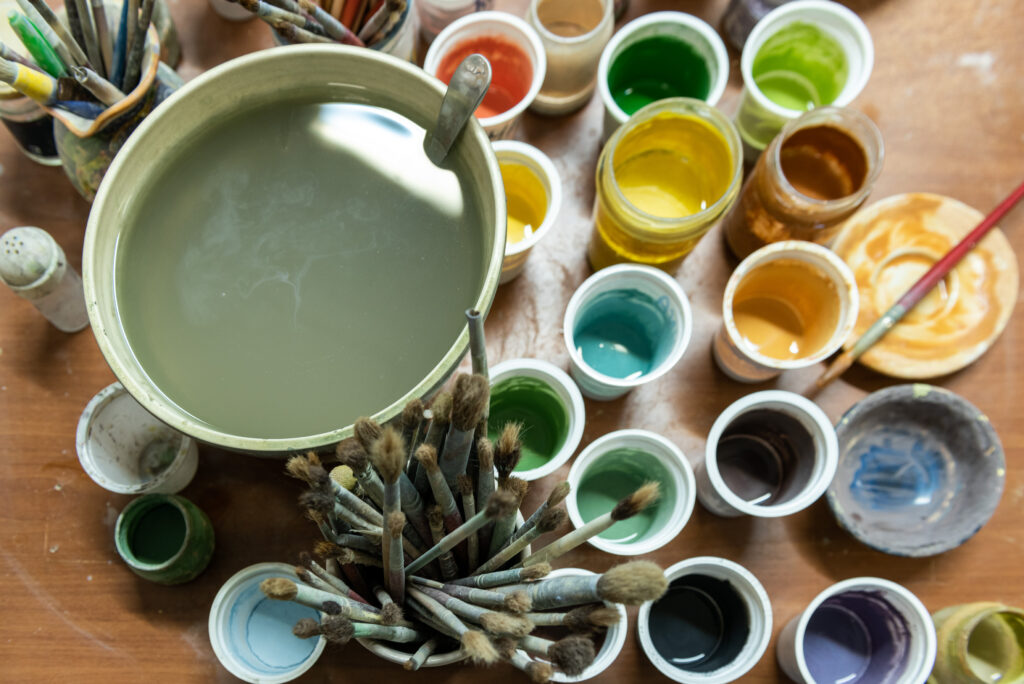
THE MAKING PROCESS

THE POTTER
Ceramic art begins with a simple lump of clay, brought to life by a Master craftsman (the “Torniante”). Masterfully modelled by hand on a lathe, the clay is transformed into an umbrella stand, a jar, a vase holder, etc. The modelled piece of clay is said to be “in terra” (“Greenware”).
As in the case of Piero, being a potter is a vocation and it leads the potter himself to being a lifelong apprentice, who learns something new every day. All this means that a Torniante grows and improves himself, day by day.
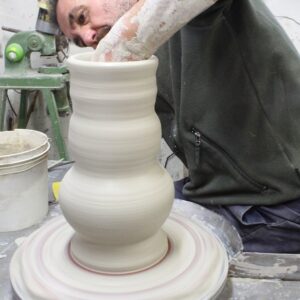

L’ ATTACCHINO
By hand or with a plaster mold, the Attacchino shapes handles, spouts and any other type of ornament. These ornaments will be affixed to the turned object, but only when it has lost some moisture and will therefore be easy to handle. The masterpiece will show even more unique. Once the master craftsman have fixed the ornament, the piece must dry to proceed to the next step.
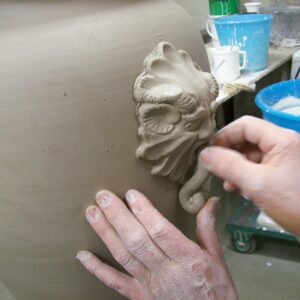

THE FIRST FIRING
The dried piece is placed in the kiln for the first firing. The greenware piece that comes out of the kiln after being cooked at 980 °C is called “biscuit”. It has particular white color.
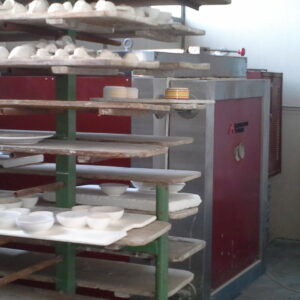

THE GLAZING
Once cooled, the Biscuit is immersed in the “Enamel”, a chalky liquid that dries quickly.
Despite the ease of the description, this step is an essential part of the whole process because, in the subsequent firing, the glaze will merge with the colors, determining color tones, the glaze’s structure and the piece’s quality. Glaze composition is complex and each workshop has its formula, which it keeps secret! The Biscuit, now entirely covered with an enamel powder, is ready to be painted.
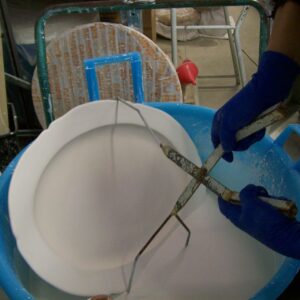

THE PAINTING
The Painter or the paintress can paint the entire piece freehand or using a kind of stencil called “Spolvero”, which is used to lightly outline the decoration. The Painter must know well the intricacies of the colors since all the colors used have an opaque tone. The true and bright colors will appear only after the final firing.
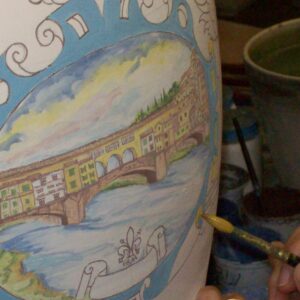

THE FINAL FIRING
The decorated piece is put back into the kiln for the second firing, at 950 °C. Placing items in the kiln is a delicate process that requires great care and attention to avoid scratching or touching the pieces before the final firing. When an object is painted on the glazed surface, the decoration can easily be removed by a simply, light graze. The final firing can take more than 36 hours: it depends on the size of the objects. The heat reduction period must be a natural cooling. The kiln door must never be opened until the internal temperature has dropped enough to avoid thermal shocks that would literally destroy the entire job. The finished product that comes out of the oven has bright colors and is protected by a strong and uniform glass layer.
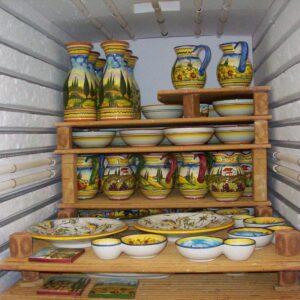
THE RESULTS
